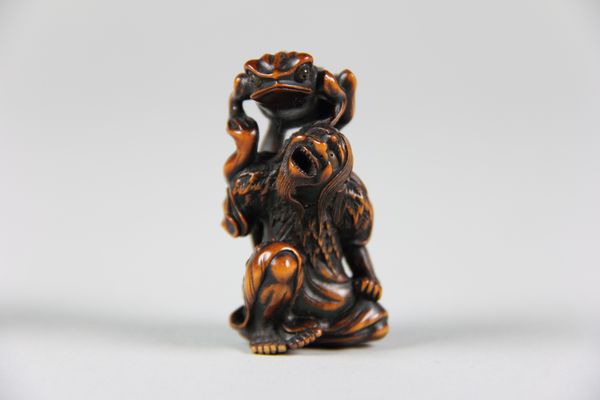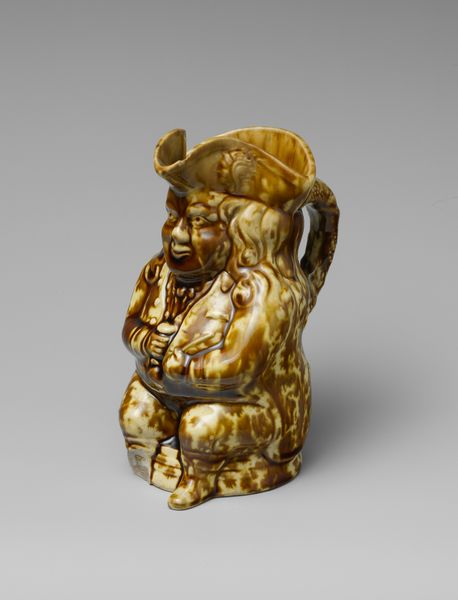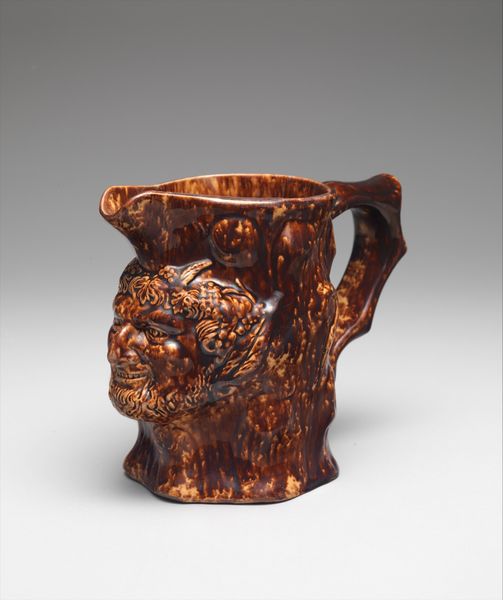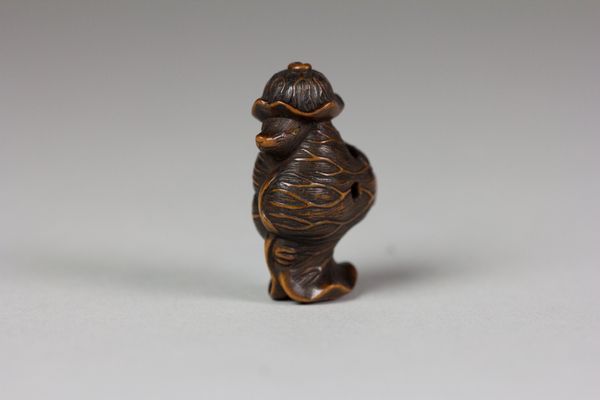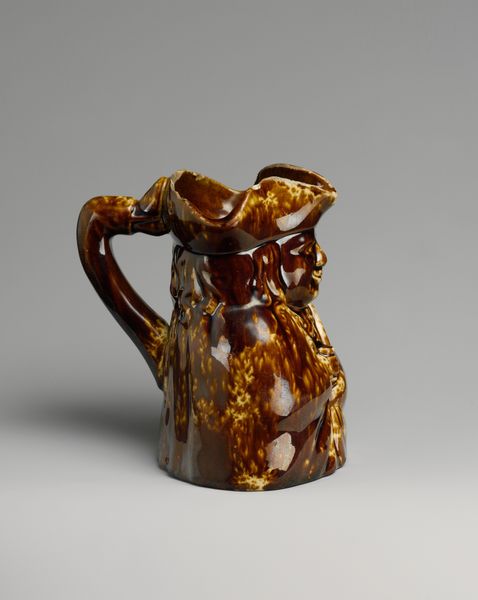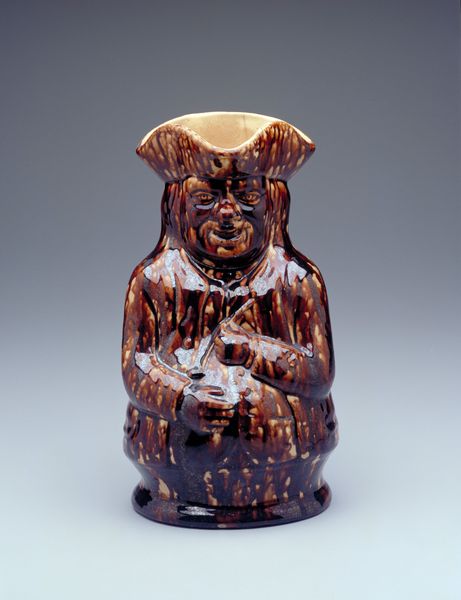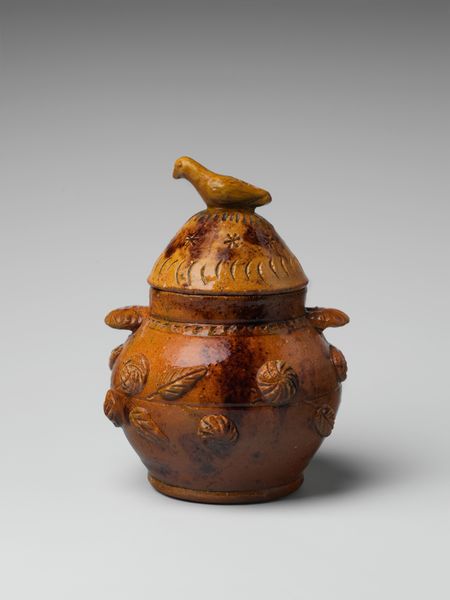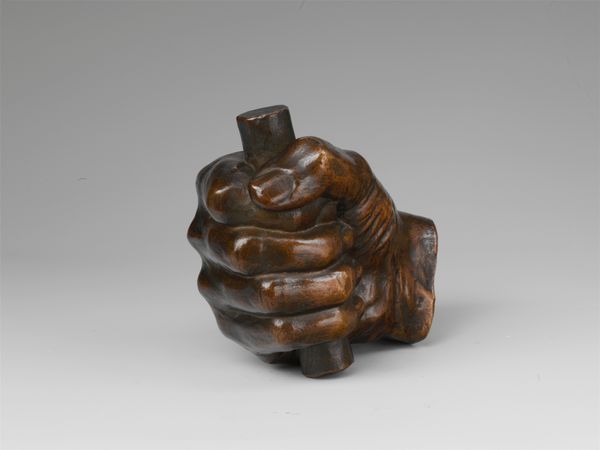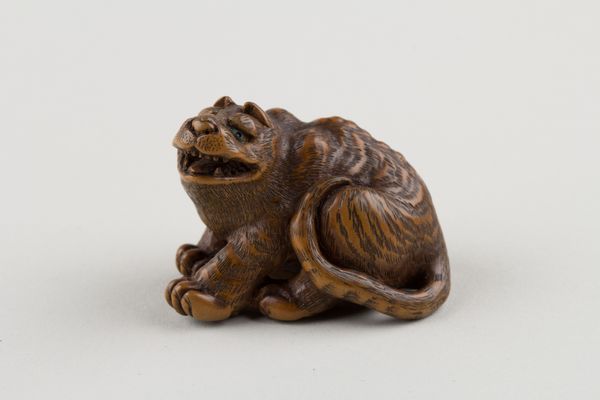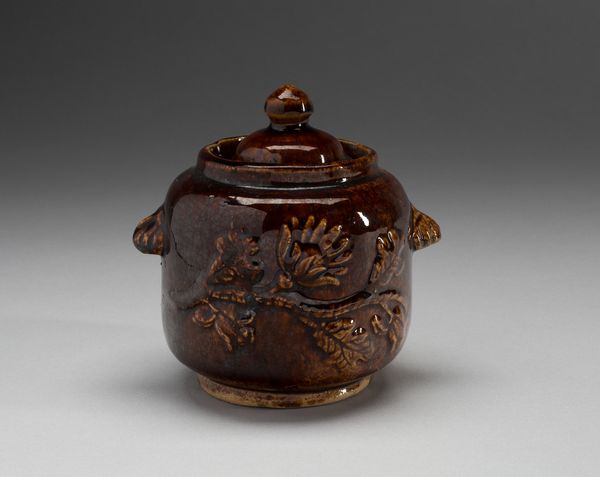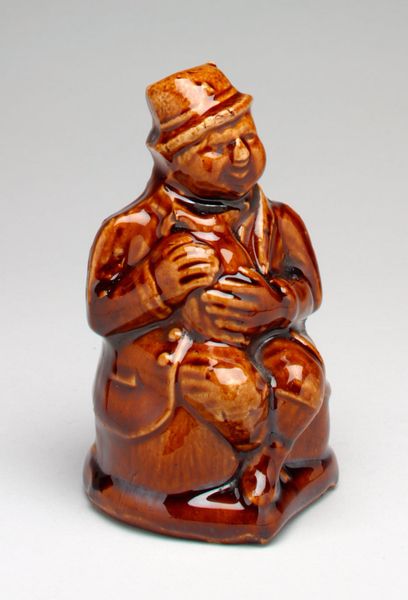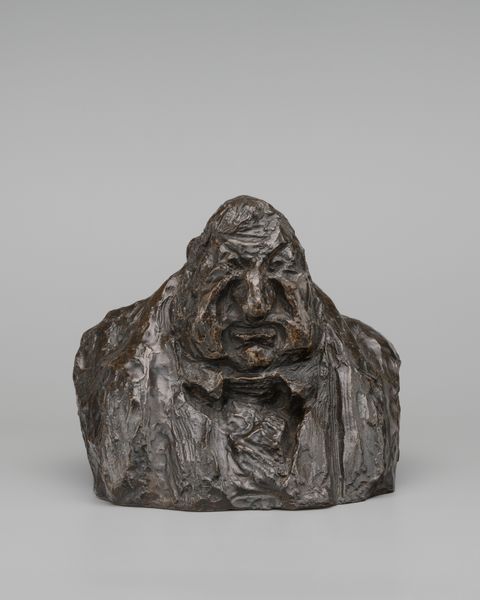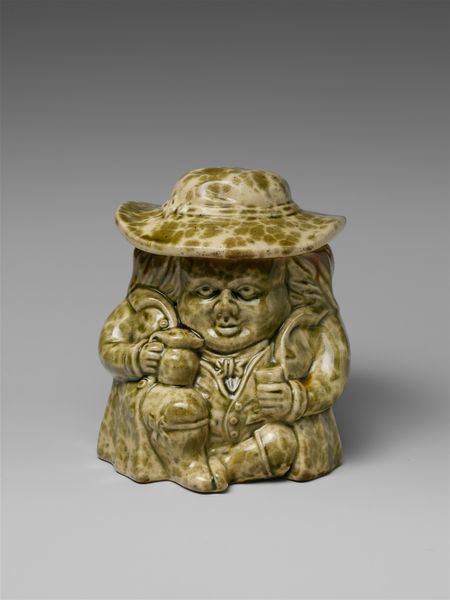
ceramic
#
folk-art
#
ceramic
#
vessel
#
decorative-art
Dimensions: 10.4 × 9.1 cm (4 1/8 × 3 9/16 in.)
Copyright: Public Domain
Curator: Ah, I’m immediately drawn in by its quirkiness. Is it supposed to look like that, so purposefully odd and rough around the edges, or is that just age and… circumstance? Editor: That "purposefully odd" is part of its charm, I think. This is a salt-glazed stoneware snuff jar, crafted sometime between 1849 and 1852 by Lyman, Fenton & Company. It's part of the Art Institute of Chicago's collection. Curator: A snuff jar, you say? Look at this fellow, all round and stout, practically swimming in that thick glaze, sporting what looks like a comically oversized hat, yet so sure of himself. It’s delightfully playful, even if snuff itself seems… well, a bit serious these days. The colour too. It almost looks good enough to eat. Or maybe that’s just me. Editor: Snuff was incredibly popular in the 19th century, and the containers were a symbol of status. But even within that social practice, these figural jars made pointed commentary on everything from the common man to racial caricatures and ideals. This particular figure evokes some minstrel tropes in its dark glazing and caricaturized features. How can an everyday object be seemingly innocent yet loaded? Curator: Now you’ve planted that in my head, it’s hard to ignore, isn’t it? Like a cheerful melody that suddenly reveals a darker undertone. This forces us to reconsider the easy pleasure of something well made and cute, because there is certainly craftsmanship to the ceramic itself. Editor: Exactly, the combination of fine detail and caricature reflects 19th century attitudes where racism and humor walked hand in hand. Consumption practices themselves have roots in some ugly power dynamics of identity and access. The question I keep asking myself is, can an object carry and transfer the full weight of oppressive intention through generations of display? Curator: So we're faced with this, then: finding something strangely, beautifully alive despite knowing about its unsettling undercurrent. That’s a lot to ask a simple pot. Maybe art, at its most useful, unsettles and disturbs in order to illuminate and engage? Editor: Absolutely. It invites reflection, forcing us to reconcile with the complexities of history embedded in our material culture. It's both aesthetically compelling and historically problematic. Curator: I suppose sometimes you just have to make peace with not knowing the whole story…but, thank goodness we can keep asking questions of each other and of the jar.
Comments
No comments
Be the first to comment and join the conversation on the ultimate creative platform.

